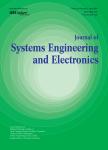版权所有:内蒙古大学图书馆 技术提供:维普资讯• 智图
内蒙古自治区呼和浩特市赛罕区大学西街235号 邮编: 010021

作者机构:Equipment Management and Unmanned Aerial Vehicle Engineering College Air Force Engineering University Satellite Control CenterXi’an
出 版 物:《Journal of Systems Engineering and Electronics》 (系统工程与电子技术(英文版))
年 卷 期:2018年第29卷第6期
页 面:1197-1208页
核心收录:
基 金:supported by the National Natural Science Foundation of China(71601183 71571190)
主 题:uncertainty theory uncertain multi-objective programming expected-variance value criterion
摘 要:An uncertain multi-objective programming problem is a special type of mathematical multi-objective programming involving uncertain variables. This type of problem is important because there are several uncertain variables in real-world ***, research on the uncertain multi-objective programming problem is highly relevant, particularly those problems whose objective functions are correlated. In this paper, an approach that solves an uncertain multi-objective programming problem under the expected-variance value criterion is proposed. First, we define the basic framework of the approach and review concepts such as a Pareto efficient solution and expected-variance value criterion using an order relation between various uncertain ***, the uncertain multi-objective problem is converted into an uncertain single-objective programming problem via a linear weighted method or ideal point method. Then the problem is transformed into a deterministic single objective programming problem under the expected-variance value criterion. Third, four lemmas and two theorems are proved to illustrate that the optimal solution of the deterministic single-objective programming problem is an efficient solution to the original uncertainty problem. Finally, two numerical examples are presented to validate the effectiveness of the proposed approach.